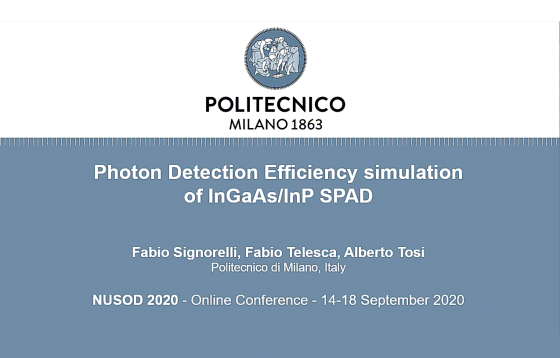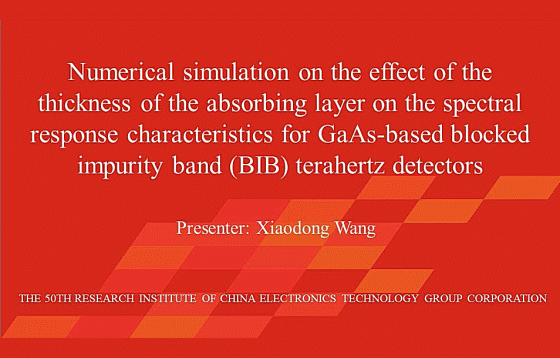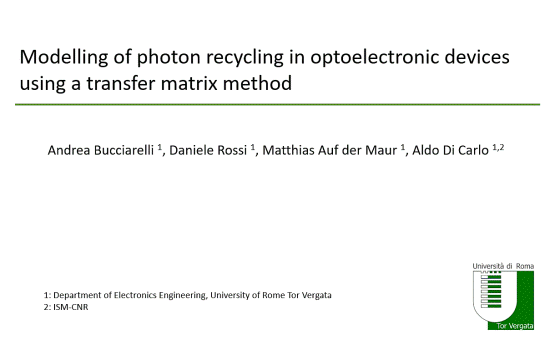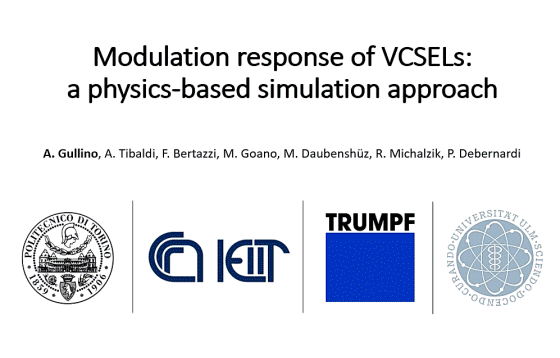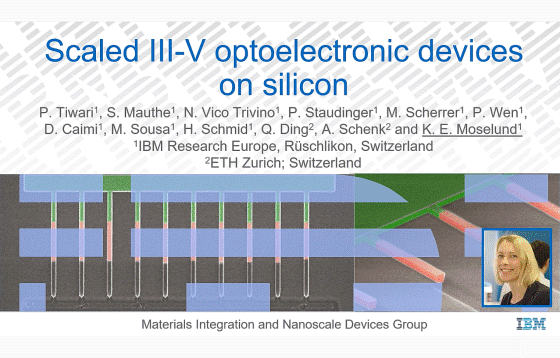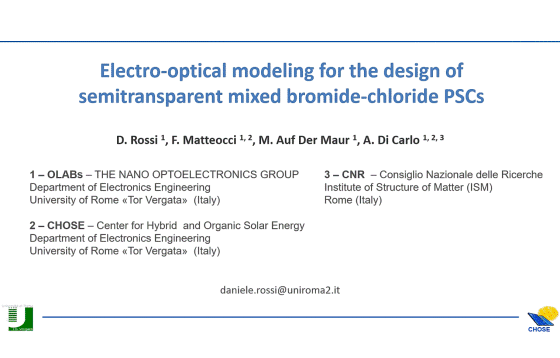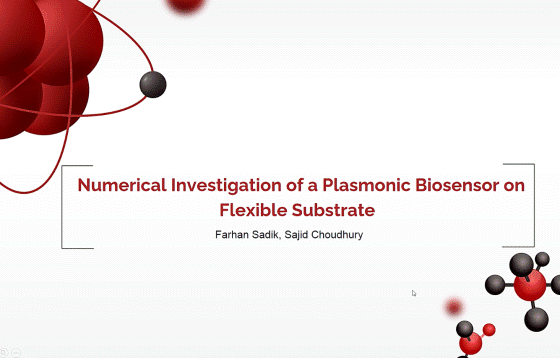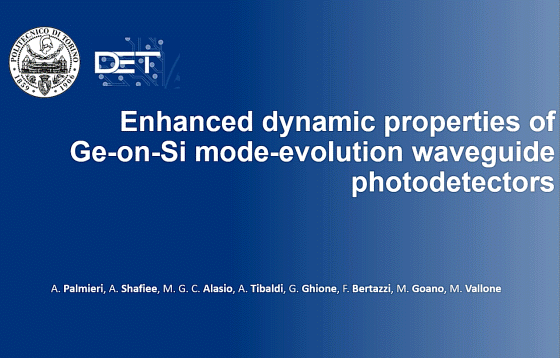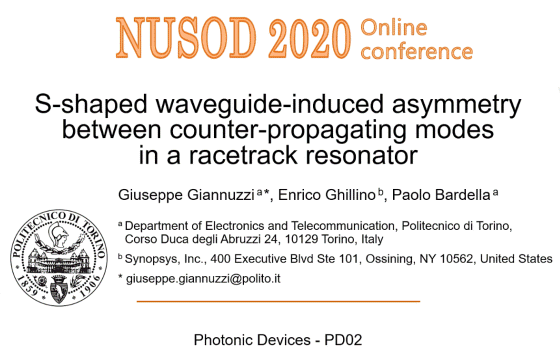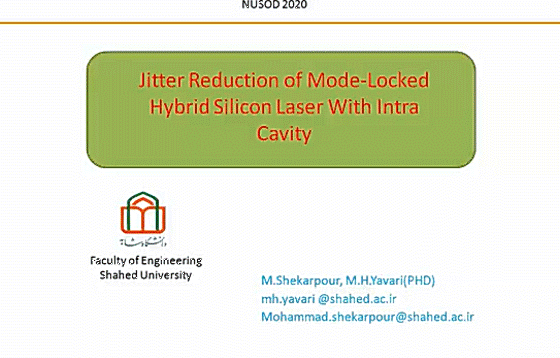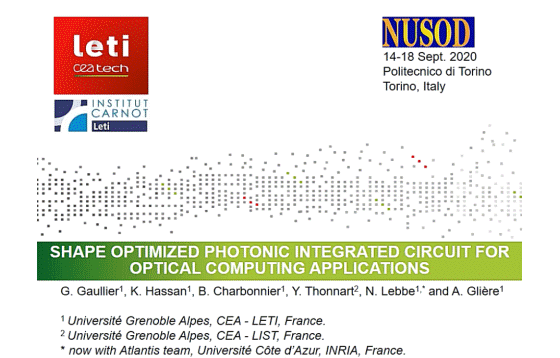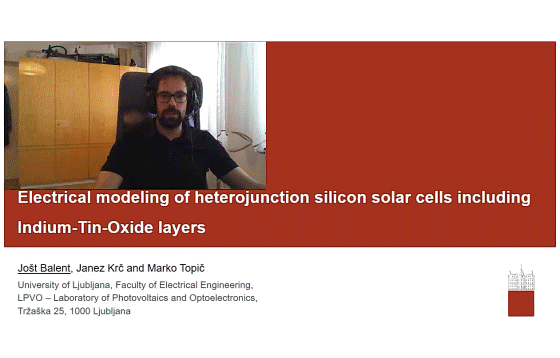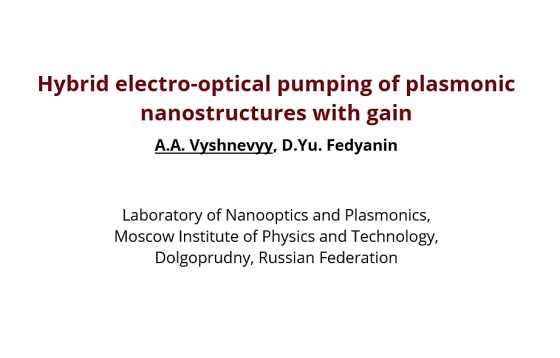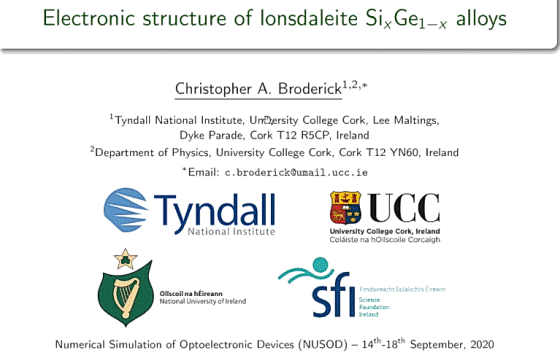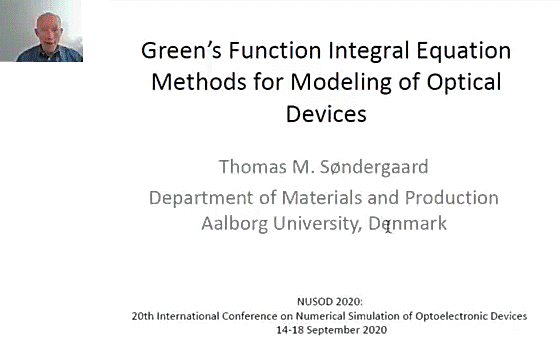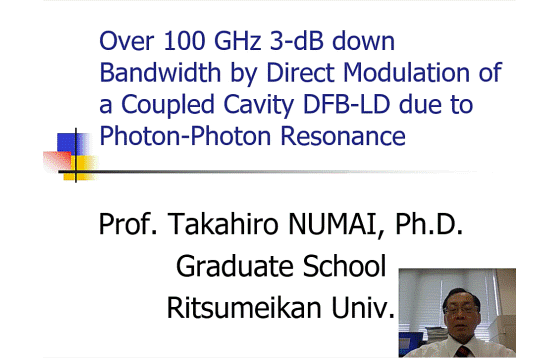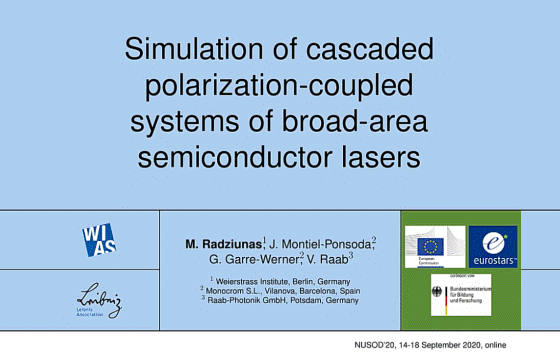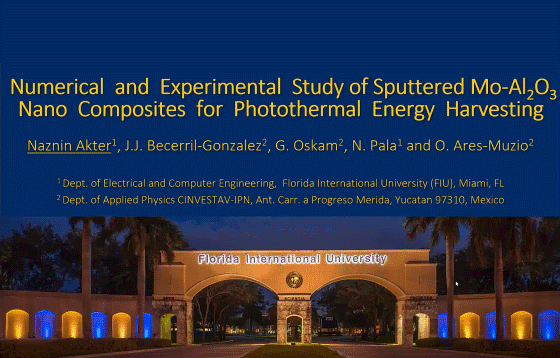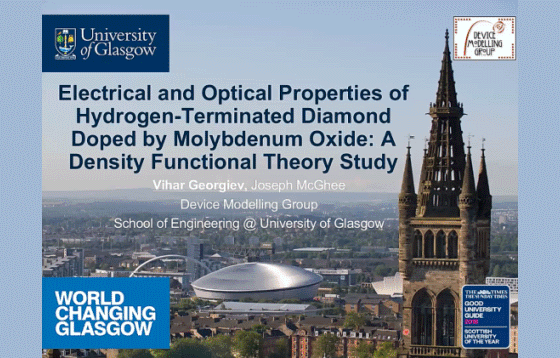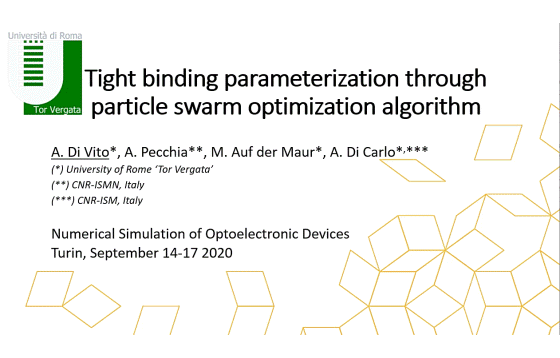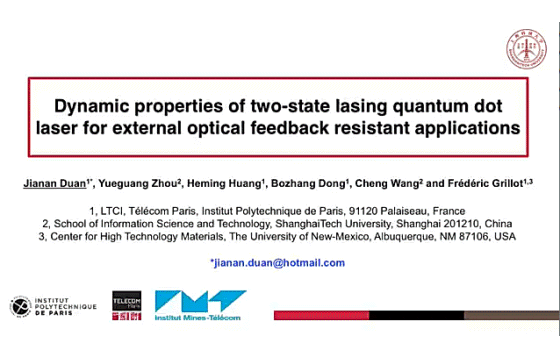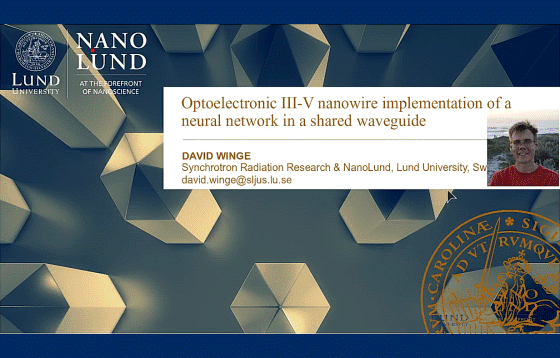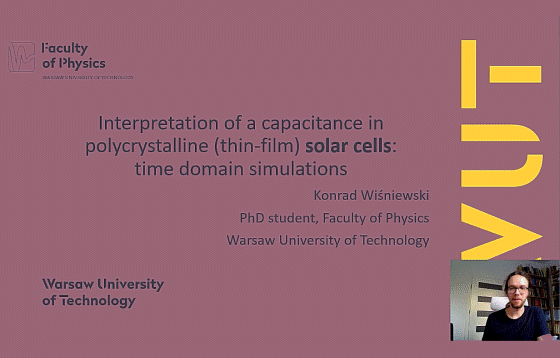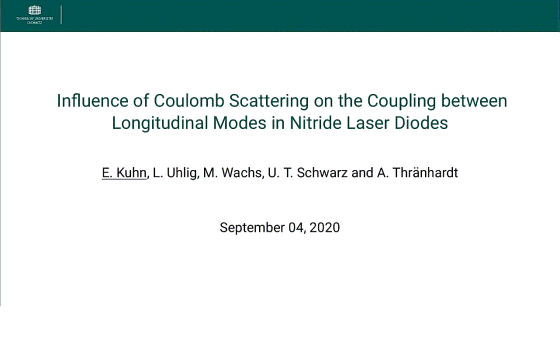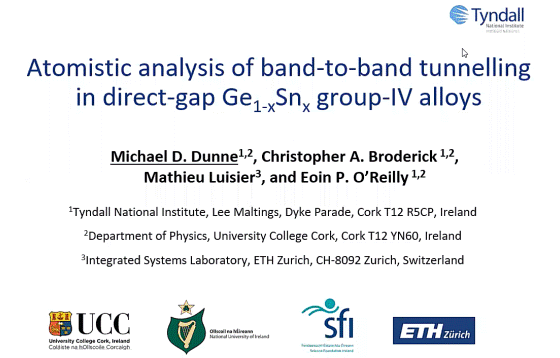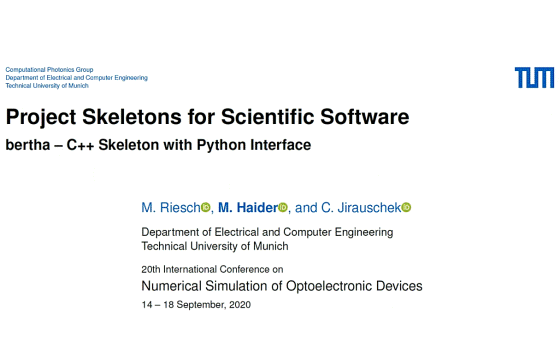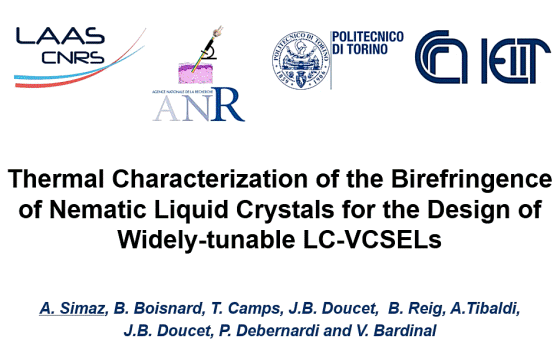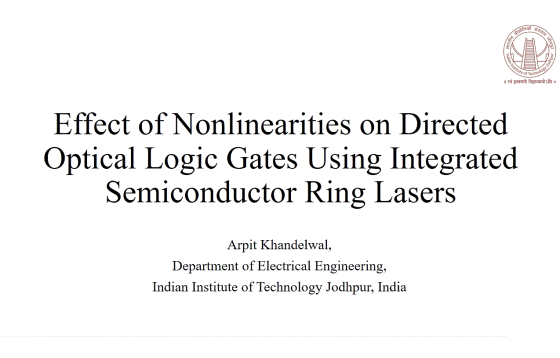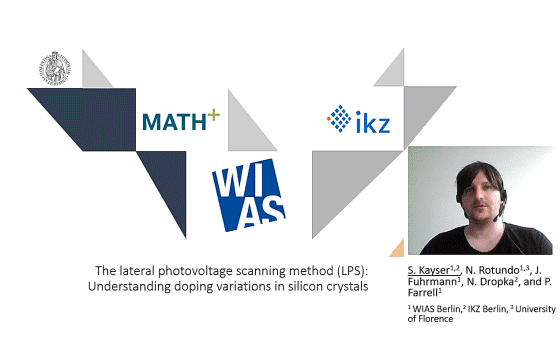


We present a comprehensive simulation flow for the estimation of photon detection efficiency as a function of wavelength in InGaAs/InP single-photon avalanche diodes (SPADs) at low temperature. We introduce a joint modelling of electrical and optical properties for SPAD detectors. We also highlight how accurately different parameters have to be calibrated in order to achieve […]
D08–Numerical simulation on the effect of the thickness of the absorbing layer on the spectral response characteristics for GaAs-based blocked impurity band (BIB) terahertz detectors
The effect of the thickness of the absorbing layer on the spectral response characteristics for Gallium Arsenide (GaAs) blocked-impurity-band (BIB) terahertz detector has been investigated in detail. It is found that Response bandwidth (BWR) is approximately a linear function of hAbs, and the relationship between the Response bandwidth (BWR) and hAbs has been given in […]
PD03–Modelling of photon recycling in optoelectronic devices using a transfer matrix method
In this work we present a generalized transfer matrix method to study the effect of the photon recycling on the performance of solar cells. Photon recycling increases the charge carrier concentration in solar cells, resulting in an increase of the open circuit voltage (Voc). The model is based on the transfer matrix method (TMM), taking […]
LD03–Modulation response of VCSELs: a physics-based simulation approach
A preliminary study of the dynamic behaviour of a GaAs/AlGaAs 850 nm VCSEL is presented, with the focus on the small-signal analysis and in particular on the optical amplitude modulation response. Simulations are performed with our in-house quantum-corrected one-dimensional drift-diffusion code D1ANA, updated to perform the AC analysis. The -3 dB cutoff frequency of the […]
IS01–Scaled III-V optoelectronic devices on silicon
In the present talk we discuss the development of the epitaxial technique Template-Assisted Selective Epitaxy (TASE) and its application for the monolithic integration of scaled III-V active photonic devices on silicon. A unique advantage of TASE for silicon photonics applications is that it enables a truly local integration of III-V material at precisely defined positions, […]
SC04–Electro-optical modeling for the design of semitransparent mixed bromide-chloride PSCs
UV-selective absorbing perovskites have attracted significant interest due to their potential applications in innovative fields, such as building integration photovoltaics. This appeal arises from the possibility to tune the bandgap by simply varying their crystal composition. In this work we present electro-optical simulations to study the effect of Cl doping in MAPb(Br1-xClx)3 based semi-transparent solar […]
NM11–Numerical Investigation of a Plasmonic Biosensor on Flexible Substrate
Surface plasmon resonance (SPR) based sensors are state of the art in bio-sensing. Here we numerically inspect a device that can induce SPR on the opposite side of planar metal films. The evanescent field of SPR can detect wide of refractive index with linear sensitivity. This device modeled on bendable PDMS substrate can launch SPR […]
D05–Enhanced dynamic properties of Ge-on-Si mode-evolution waveguide photodetectors
This work discusses coupled three-dimensional electromagnetic and electrical simulations of a Ge-on-Si waveguide photodetector where light is fed through a lateral waveguide. The numerical results show that this coupling solution leads to more uniform photon and carrier distributions along the Ge absorber compared to a conventional butt-coupled detector, allowing a broader electrooptical bandwidth for high […]
PD02–S-shaped waveguide-induced asymmetry between counter-propagating modes in a racetrack resonator
Ongoing progress in photonic integrated circuits necessitates the integration of semiconductor ring lasers (SRLs) with high performance and predictable behavior, which can be achieved when the symmetry of the SRL, which supports both clockwise and counterclockwise beam propagation, is unbalanced through loss mechanisms inside the resonator. In this work, numerical simulations were carried out on […]
LD08–Jitter Reduction of Mode-Locked Hybrid Silicon Laser With Intra Cavity Filter
We study the influence of the intra-cavity ring on dynamics, phase noise and timing jitter of a long-ring-cavity colliding pulse mode-locked laser using a delay differential equation (DDE) model. The results of dynamic show that the intra-cavity filter can suppress harmonics of 2 GHz cavity. We also find a reduction of phase noise and timing […]
IS02–Shape Optimized Photonic Integrated Circuit for Optical Computing Applications
Shape optimization techniques were quite recently applied to photonic components but to the best of our knowledge, no application to optical computing has been reported yet. Here, we present the design of a photonic integrated circuit, composed of shape optimized passive components, performing a matrix-vector product. A ≈ 2000 times gain on the overall footprint […]
SC06–Electrical modeling of heterojunction silicon solar cells including Indium-Tin-Oxide layers
In this contribution we performed opto-electrical simulations of heterojunction silicon (HJ Si) solar cell with Indium-Tin-Oxide layers included in simulations as front and rear contacts. Two-dimensional numerical simulations using Sentaurus TCAD software were carried out. We studied the effect of defect state density in p- and n-type hydrogenated amorphous silicon layers on device performance. Rigorous […]
N05–Hybrid Electro-Optical Pumping of Plasmonic Nanostructures with Gain
We propose to pump active plasmonic devices, such as plasmonic amplifiers, lossless plasmonic waveguides and nanolasers, simultaneously electrically and optically (hybrid pumping). We show that such a pumping method results not only in a higher modal gain but also in an improved control over the spatial profile of optical gain in the device, which allows […]
NM02–Electronic structure of lonsdaleite SiGe alloys
Conventional diamond-structured silicon (Si) and germanium (Ge) possess indirect fundamental band gaps, limiting their potential for applications in light-emitting devices. However, SixGe1-x alloys grown in the lonsdaleite (“hexagonal diamond”) phase have recently emerged as a promising direct gap, Si-compatible material system, with experimental measurements demonstrating strong room temperature photoluminescence. When grown in the lonsdaleite phase, […]
MM01–Green’s function integral equation methods for modeling of optical devices
Green’s function integral equation methods are presented that can be applied for modeling of optical devices in cases where the problem can be formulated as a scattering problem. The methods are applied to study in three dimensions the effect of a cylindrical micro-lens on radiation emitted from a THz photoconductive antenna, and for studying the […]
LD09–Over 100 GHz 3-dB down Bandwidth by Direct Modulation of a Coupled Cavity DFB-LD due to Photon-Photon Resonance
This paper reports on 3-dB down bandwidth of 110.6 GHz by direct modulation of a coupled cavity DFB-LD with phase-shifted/uniform gratings due to photon-photon resonance when the injected current is 3.5 times the threshold current.
IS03–Simulation of cascaded polarization-coupled systems of broad-area semiconductor lasers
We present a brightness- and power-scalable polarization beam combining scheme for high-power, broad-area semiconductor lasers. To achieve the beam combining, we employ Lyot-filtered optical reinjection from an external cavity, which forces lasing of the individual diodes on interleaved frequency combs with overlapping envelopes and enables a high optical coupling efficiency. We demonstrate how repeatedly introduced […]
SC02–Analysis and optimization of perovskite-silicon tandem solar cells by full opto-electronic simulation
We present a comprehensive opto-electronic simulation framework for the computational analysis and optimization of perovskite-silicon tandem solar cells, consisting of a combination of a multiscale optical model for the simultaneous consideration of interference in thin coatings and scattering at textured interfaces with a mixed electronic-ionic drift-diffusion transport model that captures the peculiarities of the geometries […]
N06–Hybrid Electro-Optical Pumping of Plasmonic Nanostructures with Gain
We report on the numerical and experimental study of the optical spectra of Mo-Al2O3 nanocomposites that were grown using sequential DC and RF sputtering. The measured spectra were compared with the ones calculated using FDTD simulations to analyze the prediction accuracy of the approach.
NM03–Electronic and Optical Properties of Hydrogen-Terminated Diamond Doped by Molybdenum Oxide: A Density Functional Theory Study
In this work we investigate the surface transfer doping process induced between a hydrogen-terminated (100) diamond and a metal oxide MoO3, using the Density Functional Theory (DFT) method. Using DFT, we have calculated the electronic and optical properties of the hydrogen-terminated diamond and established a link between the underlying electronic structure and the charge transfer […]
MM06–Tight binding parameterization through particle swarm optimization algorithm
The tight binding (TB) approach represents a good trade-off between accuracy and computational burden. For this reason, it is widely used for device simulations. However, a proper description of a physical system by means of TB requires an accurate parameterization of the Hamiltonian matrix elements (HME), that is usually done by fitting over suitable properties […]
LD10–Dynamic properties of two-state lasing quantum dot laser for external optical feedback resistant applications
This work investigates the dynamics of two-state quantum dot lasers through semi-analytically solving a set of rate equations. Simulations reveal that the occurrence of excited state lasing reduces the damping factor of the laser while increases the linewidth enhancement factor associated to the ground state transition. These results are in good agreement with the experimental […]
IS04–Optoelectronic III-V nanowire implementation of a neural network in a shared waveguide
Neural node components consisting of III-V nanowire devices are introduced. This allows for the construction of a small footprint specialized neural network. A broadcasting strategy is developed which removes the need for inter-node wiring. As a model system, an insect brain navigational circuit is chosen and successfully emulated using the introduced nodes and network architecture. […]
SC07–Interpretation of a capacitance in polycrystalline solar cells: time domain simulations
In this work, we presented simulations of capacitance of polycrystalline solar cells using time-dependent calculations based on the finite element method. Our starting point was capacitance transient measurements of thin-film CIGS solar cells, which to this day, after twenty years of investigations, do not have the correct theoretical description. We showed, that there exists a […]
LD11–Influence of Coulomb Scattering on the Coupling between Longitudinal Modes in Nitride Laser Diodes
Due to their small separation of longitudinal modes, Fabry-Perot type laser diodes show rich mode competition effects. For example streak camera measurements show cyclic mode hopping, where the currently active longitudinal mode changes from lower to higher wavelengths. This effect can be explained by beating vibrations of the carrier densities in the quantum wells and […]
NM04–Atomistic analysis of band-to-band tunnelling in direct-gap GeSn group-IV alloys
The emergence of a direct band gap in Ge1-xSnx alloys has stimulated interest in developing Ge1-xSnx alloys and nanostructures for applications in Si-compatible electronic and photonic devices. The direct band gap of Ge1-xSnx, combined with the strong band gap reduction associated with Sn incorporation, makes Ge1-xSnx a promising material system for the development of Si-compatible […]
MM05–Project Skeletons for Scientific Software
Although research relies heavily on software packages such as mathematical libraries or data analysis tools, efforts to provide high-quality scientific software are hardly rewarded. As a possible way out of this dilemma, project skeletons can be employed to accelerate software development while ensuring code quality. In this work, we review existing project skeletons and present […]
LD07–Thermal Characterization of the Birefringence of Nematic Liquid Crystals for the Design of Widely-tunable LC-VCSELs
In this work, the thermo-optical properties of nematic liquid crystals are investigated through localized reflectance spectra measurements performed on a tunable LC-filter. The final aim is to insert such LC in the cavity of a tunable VCSEL device, in which local self-heating due to optical or electrical pumping must be taken into account. We demonstrate […]
IS05–Effect of Nonlinearities on Directed Optical Logic Gates Using Integrated Semiconductor Ring Lasers
Nonlinearities in the semiconductor ring laser (SRL) are incorporated in the analysis of directed optical logic gates and their effects on the output are studied. The paper discusses the effects of gain medium linewidth, internal quantum efficiency and self and cross gain saturation on the output of directed optical NOT gate implemented using SRLs.
SC08–The lateral photovoltage scanning method (LPS): Understanding doping variations in silicon crystals
The lateral photovoltage scanning method (LPS) can be used to detect undesired impurities which appear in silicon crystals during growth. Our goal is to make a digital twin of the LPS method. To this end, we replace inflexible blackbox code with a physics preserving finite volume discretization, confirming three theoretical results via a new simulation […]

